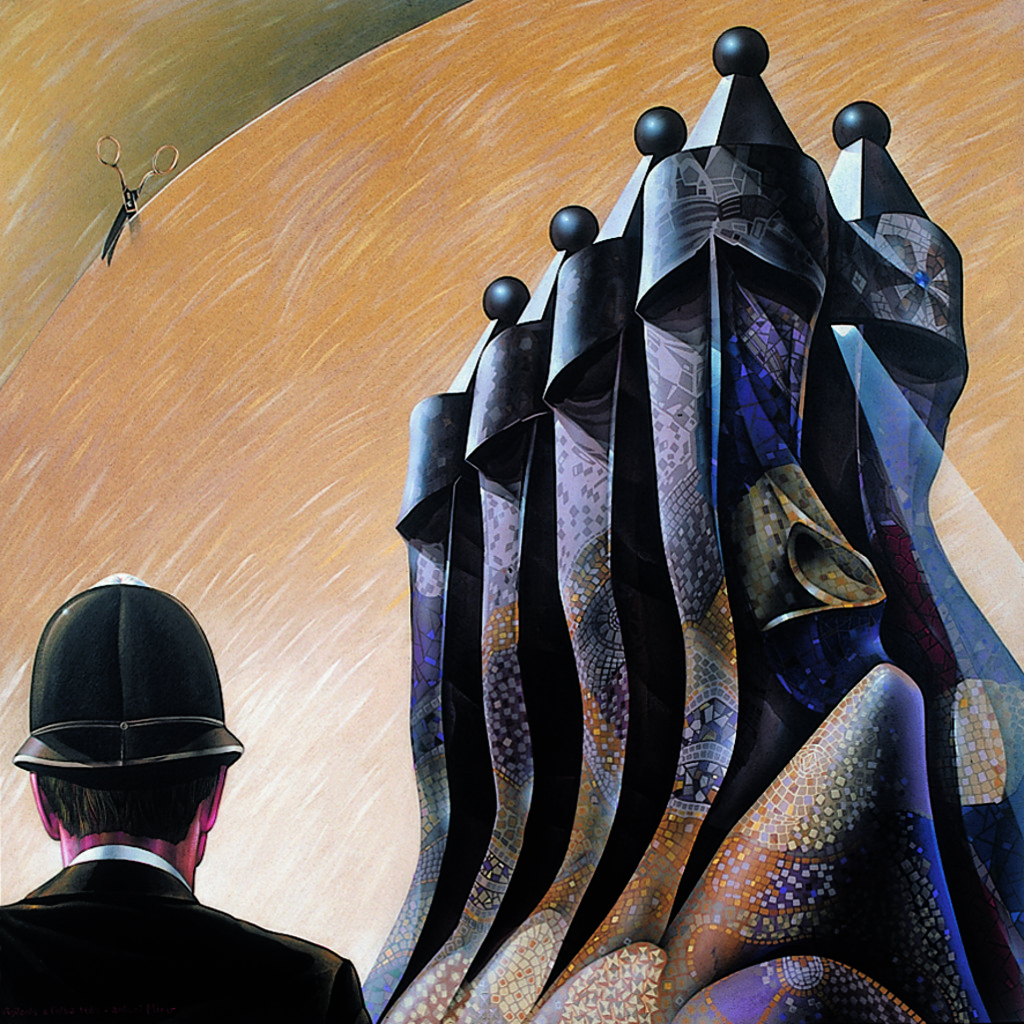Vigilants a l’alba (Watchmen at dawn)
This painting is part of the “Pinteu Pintura” (Paint Painting) series. It is a singular canvas within this series, since its features clearly depart from those of most of the other works. The artist’s interest in building a scene from recognisable fragments that are part of the European cultural tradition is clear. Yet in this case, the inspiration comes from architecture, not painting. He mixes the fragments with elements linked to everyday life — a feature that is found in the rest of the series.
Narratively, the title aims at identifying the British ‘Bobby’ and the chimney tops of Gaudí’s Casa Batlló as the ‘watchmen’. Generally, the appearance of the Casa Batlló’s chimneys, identical to those of the nearby Pedrera building, have generally been compared to helmeted ‘warriors’, given their anthropomorphic connotations and their characteristic tops. Their organic quality and the brilliant and vibrant finish provided by the trencadís (crazed ceramic) makes them attractive sculptural forms, in this case.
The representation of the moment of dawn, in which the two kinds of watchmen are placed, is clearly a metaphorical one. The canvas’ whole background evokes the heavenly vault at the moment of daybreak, just at the cut-off point between the end of night and the start of day. Thus the presence of the scissors, which cut along an arc dividing the common part of two portions: the waning darkness above from the waxing daylight below. Yellow, white and grey brush strokes suggest the stars over the ochre background, with which the heavenly vault is painted.
Time, as in other works by Miró, is suggested in the composition by directional, interrupted gestures, such as that of the scissor-cut. Light, which is of paramount importance in this canvas, is not only superficially shown in the sky, but is also rendered with a determined linearity by a ray of light finding a hole between the top of the two chimneys.
The right-hand two thirds of the picture are taken up by the most important object in the composition: the Gaudian chimneys. The other three elements under the sky complement them. The figures of the ‘Bobby’ and the scissors provide visual balance in the remaining left-hand third of the composition. The arc along which the scissors cut, the angulation formed by the chosen perspective, the position of the policeman’s helmet and the inclination of the lines convey a strong diagonal set-up, which contrasts with that of the ray of light.
Significantly, the presence of the ‘Bobby’ shown from behind enhances the sense of surveillance, which can be related to the Gaudian chimneys through the association of the helmets. Both the scissors and the ray of light suggest the very transitional moment during which everything takes place, at sunrise. In order to convey a certain degree of darkness, over the chimneys, the artist steers towards blue and purple hues from the predominant green of the referent. Their surfaces are beautifully rendered, but without succumbing to aesthetic literalism.
Santiago Pastor Vila
